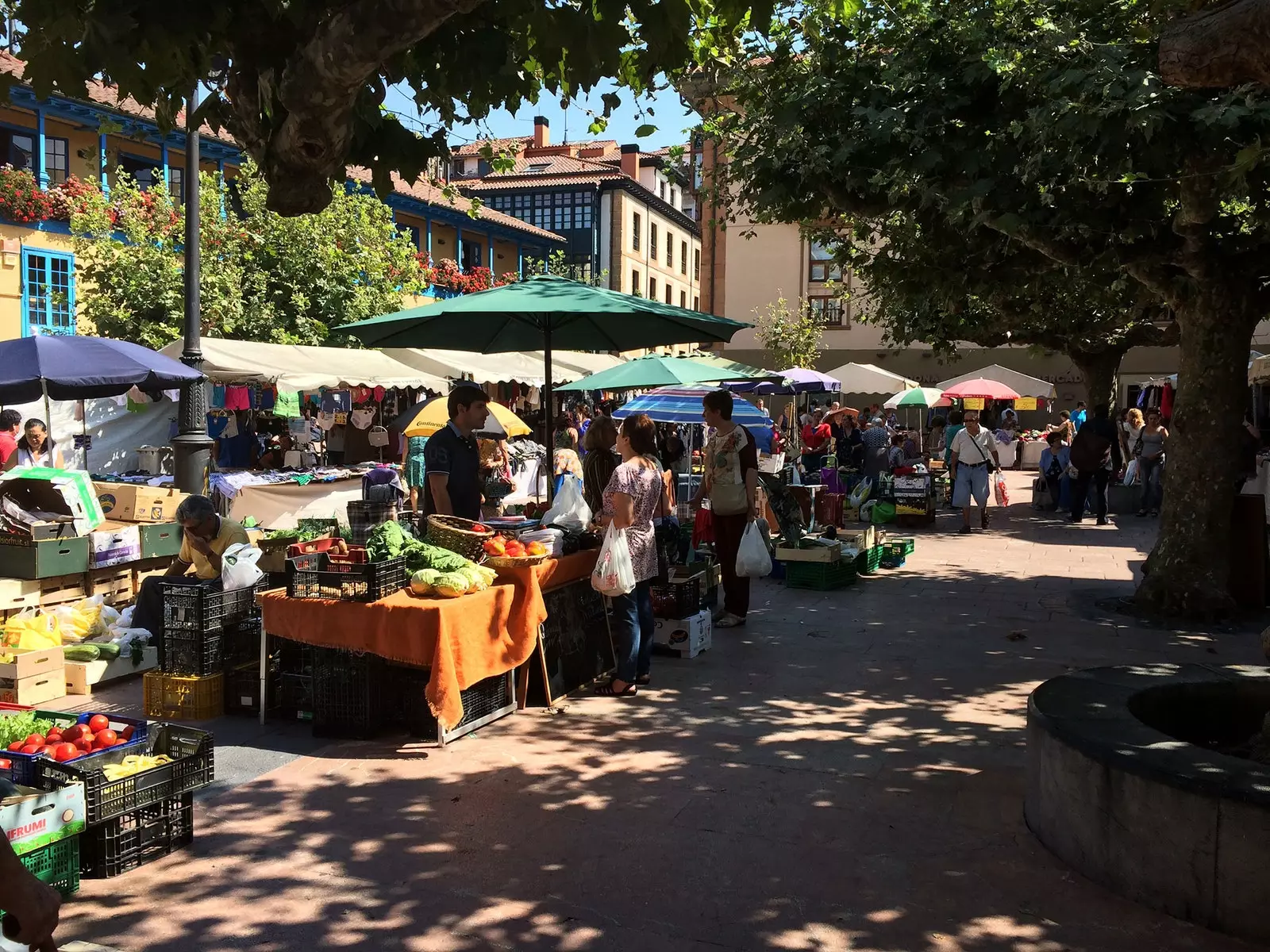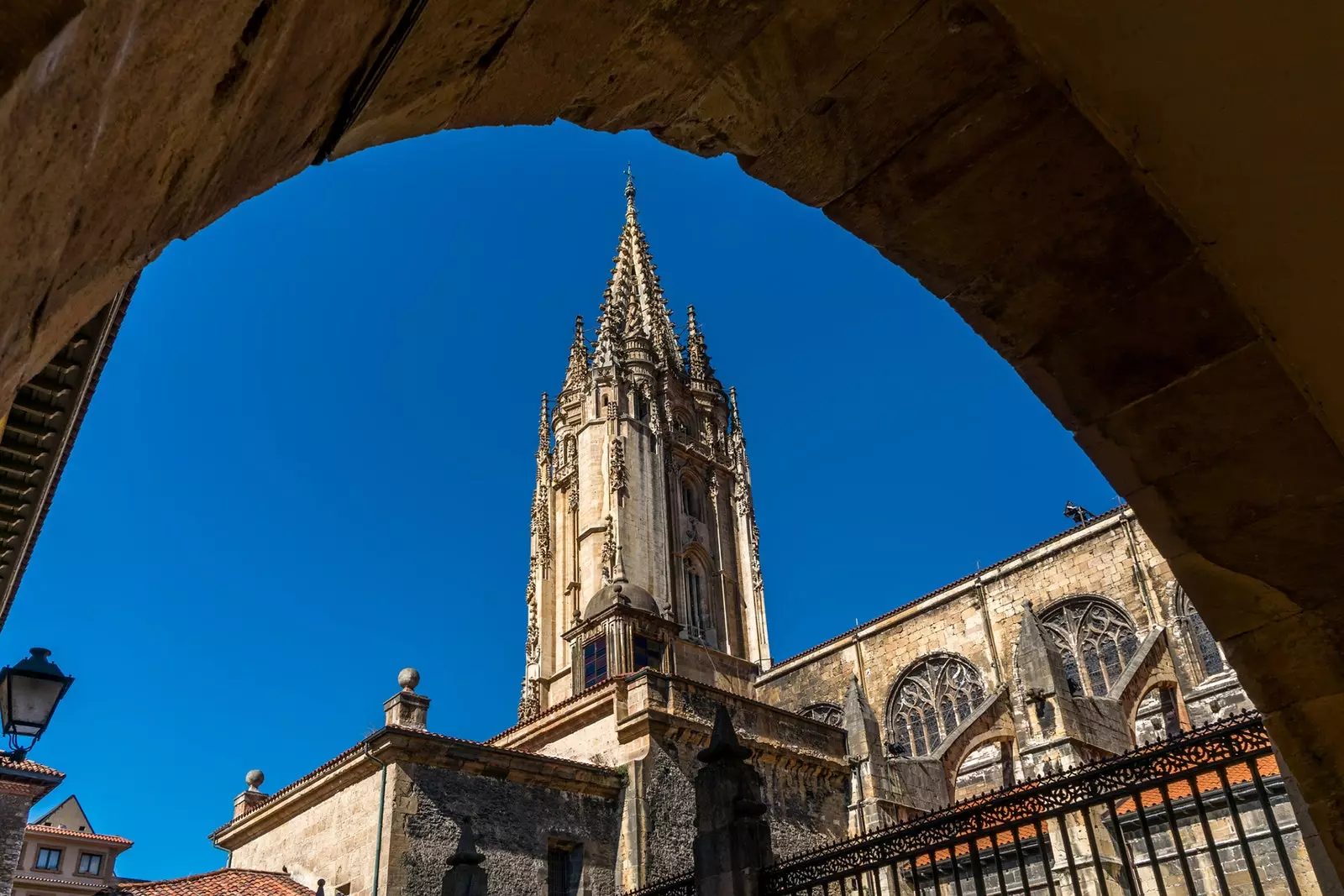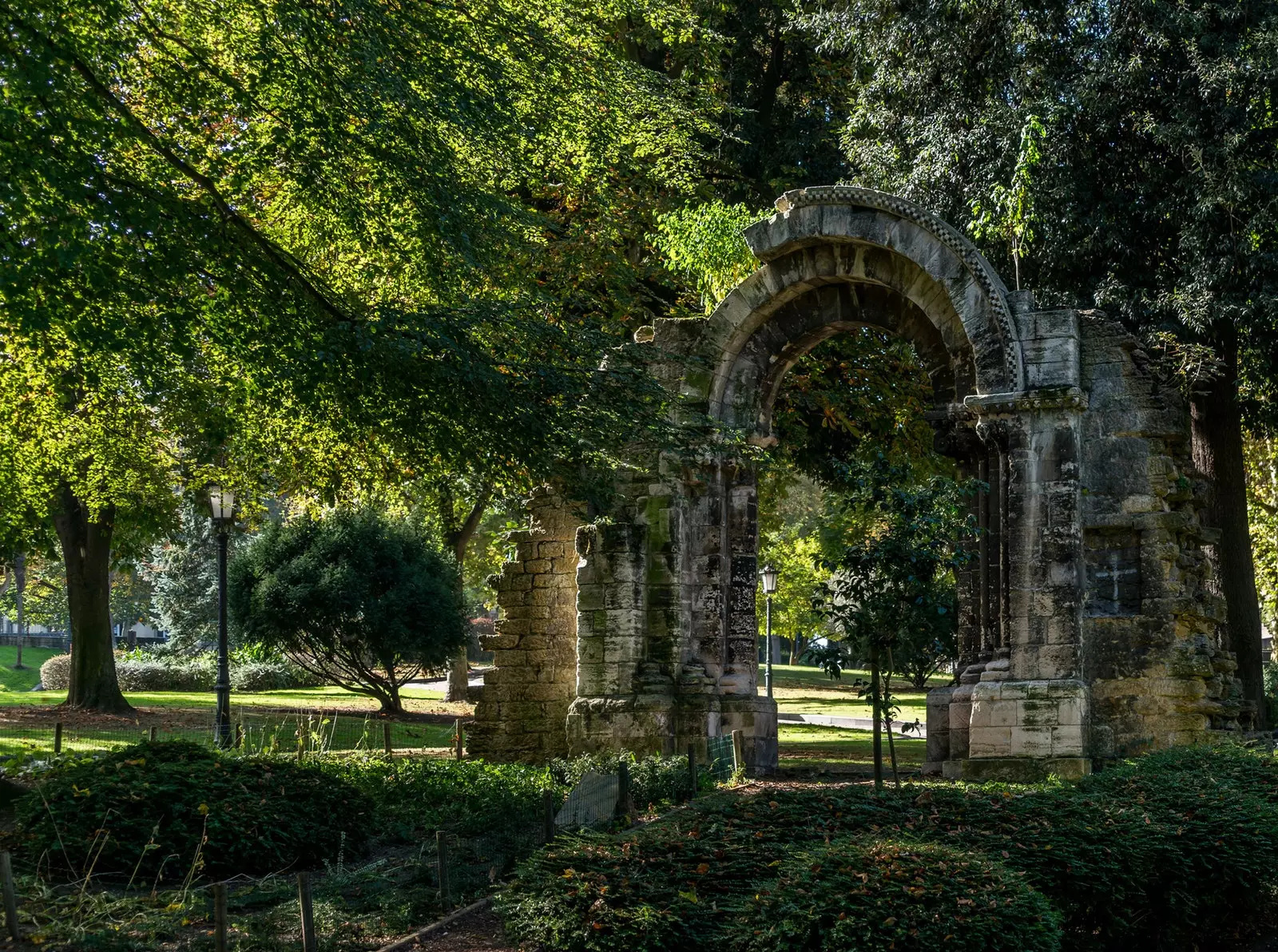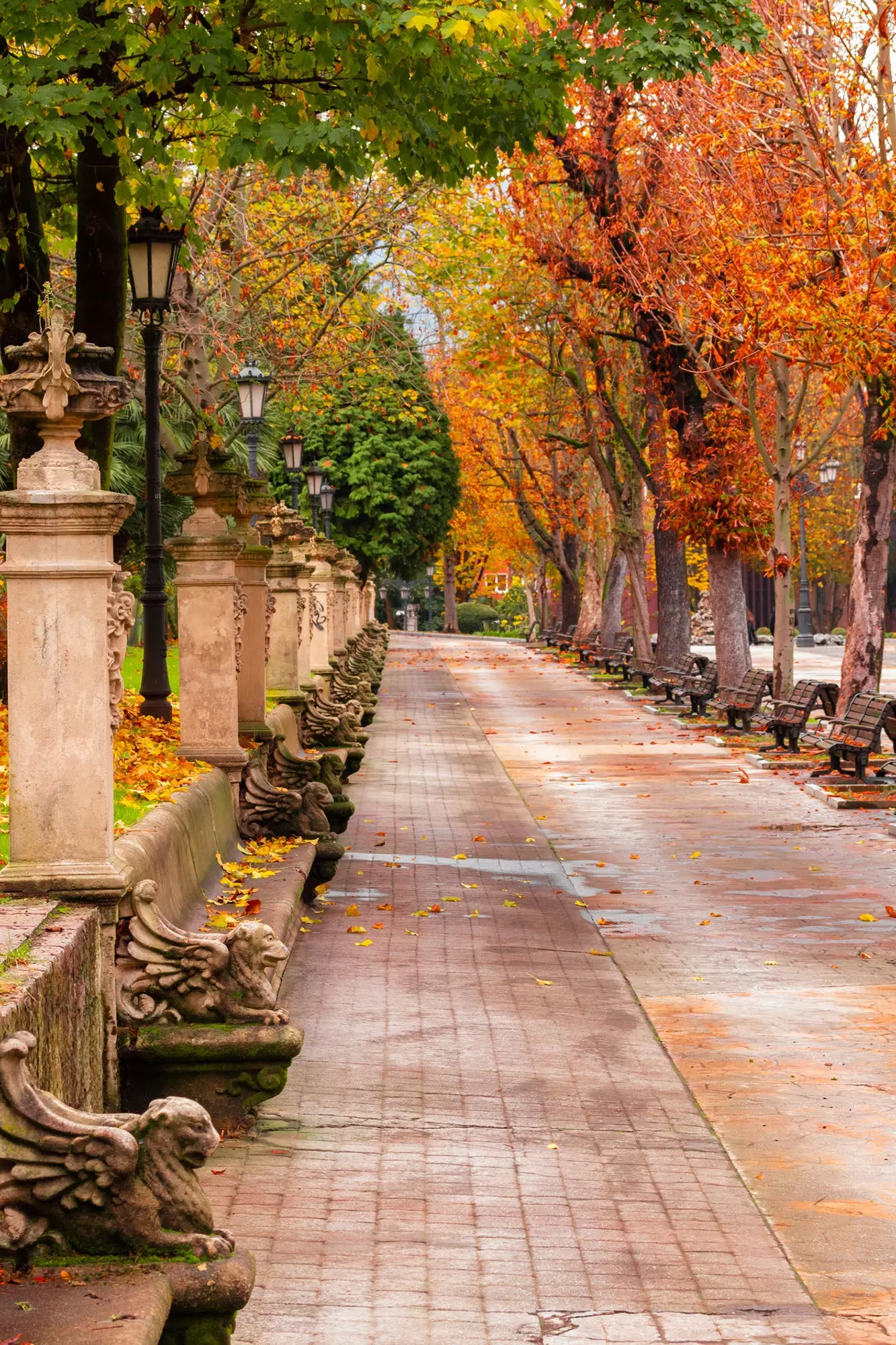parks dyed autumn colors and mild temperatures, as well as spoon dishes with exquisite native products and their Pre-Romanesque heritage , unique in the world, make this a perfect time to visit the Asturian capital.
ASTURIAN PRE-ROMANESQUE
Declared a World Heritage Site by UNESCO in 1985, this artistic style is reason enough to visit the city. Despite the fact that various Pre-Romanesque monuments dot the Asturian geography, Oviedo is the point that has more examples . In the center of the city is the Foncalada Fountain , a treasure of hydraulic engineering of that time, as well as the Church of San Julián de los Prados , also known as Santullano.
The Mount Orange , which crowns the city, has two of the most spectacular buildings of this unique architectural style: Santa María del Naranco and San Miguel de Lillo. Built in the 9th century when Oviedo was a royal city, during the reign of Ramiro I, UNESCO considers that Asturian Pre-Romanesque architecture is a unique artistic achievement . It is worth noting that these buildings use columns instead of pillars, a visible influence on the religious architecture of the rest of the Peninsula.
DAILY LIFE IN THE FONTAN
To measure the pulse of the city, nothing like visiting to Plaza de El Fontan , because there is the market of the same name, the pantry of the Asturian capital . Housed in a building from the end of the 19th century, the municipal ordinances that are preserved attest that this place has selling fresh food since the 13th century . There you will find from the best Asturian cheeses, to sausages, as well as, of course, fruits and vegetables.

The Fontan
BUILDINGS OF LEGEND
A stop at Constitution Plaza It will serve to admire the church of San Isidoro el Real, which began to be built in 1578 and which shares the location with the Town Hall. It is notorious that the church has a single tower , and it is that as in the case of the city's cathedral, the initial design had two towers, but it ended up being built with only one.
The cathedral of Oviedo houses one of the most representative symbols of the Principality, the Victoria Cross . Present even on the Asturian flag, this sophisticated piece of gold work was donated by King Alfonso III the Great to the old cathedral of San Salvador in Oviedo.
It is currently in the Holy Chamber , which was founded as a palatine chapel by King Alfonso II the Chaste and has been a World Heritage Site since 1998. This cross should not be confused with the one that hangs from the Roman bridge of Cangas de Onís, which is a reproduction of the original.

Cathedral of Oviedo
CIDER, THE DRINK PAR EXCELLENCE
Gascon street , also known as the cider boulevard, is a excellent choice to enjoy one of the gastronomy treasures of the region . Drinking a culín of natural cider, served in very fine crystal glasses and poured directly from the Asturian green bottle, is one of those essential images of Asturias.
But not everything is cider, since Asturias also has a wine Protected Designation of Origin, Vino de Cangas. And in the Campoamor and Manuel Pedregal streets there is the one known as the “wine route”, the perfect stop before going to dinner.
CITY OF CULTURE
The Campoamor Theatre, Located in the heart of Oviedo, it hosts the opera season, which normally starts with the return to school, in September. Also, this theater is known internationally for being the scene of the award ceremony Princess of Asturias Awards.
In addition, Oviedo is a city full of sculptures and statues that are worth exploring, such as the famous work of Botero, Maternity , or the one signed by Úrculo, one of the most controversial , Coolies Monumentalibus , and located next to the Campoamor Theater.
Secondly, The Regent , a tribute to the protagonist of the award-winning Clarín book, was created by Mauro Álvarez Fernández and is located in front of the cathedral. the of Mafalda , one of the most recent statues, the work of Pablo Irrgang, is in Campo San Francisco and has already become a tourist attraction.
AN AUTUMN WALK IN THE SAN FRANCISCO COUNTRYSIDE
The green lung of Oviedo , located in the heart of the city, next to the emblematic Uria street , and its almost a thousand trees are dressed in autumn. Chestnut, lime, maple and plane trees, as well as the Walk of the Alamos They add color to the city. The park owes its name to a Franciscan monastery from the 13th century and is the best place to enjoy the fresh air and feel in the middle of a forest, albeit in the middle of the city.

field of st francis
MUSEUMS IN THE HEART OF THE CITY
It is worth discovering Archaeological Museum of Asturias , located in the old convent of San Vicente, in the old part of the city. Also, the Oviedo Museum of Fine Arts , which opened its doors in 1980 and has recently been restored, is a must-see.
The collection of the Museum of Fine Arts of Asturias was originally formed from the funds of the former Provincial Council and the former Museum of Paintings of the Provincial Academy of Fine Arts of San Salvador de Oviedo and currently has more than 15,000 pieces, including works by Picasso, Sorolla, Goya, Zurbarán or Murillo.
AUTUMN GASTRONOMY
Spoon dishes are ideal for the cold months and are also one of the great specialties of Asturian cuisine. Therefore, the pot of cabbage, a good Asturian bean stew or a pot of chestnuts, very autumnal, they are a very comforting and appetizing food for this time of year . And for dessert, some homemade casadielles or rice pudding are the perfect finishing touch.

Discover the secrets of autumn in Oviedo
